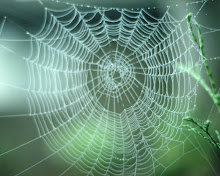Mountain Meadows--Gene England-Clifton Jolley-Edward Geary
While Mr. Gibbs sometimes jumps to conclusions, there were,
in the article, some new puzzle pieces. The article was written while my Grandfather was in Scotland, preaching the gospel,
but also looking for members of our clan or others who might want or need to gather to Zion. He came home shortly afterward and was called as Bishop and also as the Miller. This meant that he had a great deal to do with the local Indiian band,
since the poor were given bran and wheat germ from the mill, and this included most of the Indians.
He may well have spoken Piute. His mother lived with him in
Panguitch, which was an Indian Village at that time. My Great-Great Grandfather was away looking for work. This would have been a little bit after the massacre and my Book of Remembrance was lost when the house in Oregon was sold,
so I can't look it up.
Utah lived under two types of law in the early days. These both involved slavery. Southern Utah Indians lived under Spanish law, which regulated slavery--the selling of children under 14, for instance, was illegal. The Mormons were Yankees and very much against slavery, but were outnumbered in many sparsely populated areas, and people like my Great Grandmother, who had a two year old and was pregnant, had to pretty much do as the Romans did. There was a large black market that traded in fair skinned children and Native children traded for food.
My Great Grandmother was home with her two year old when an Indian neighbor came into the cabin, going through cupboards and making a very thorough inspection, she scolded my Great Grandmother some, was gone for awhile, then returned with a large bowl of steaming mush made of local
grass seed, probably faleris or a legume which could grow
quite large seeds.
Some time later, an Indian man came to the door carrying my Great Grandfather. He tried to reason with my Great Grandmother and was unsuccessful and frustrated, but nothing to suggest that she was in danger. He explained that she needed more food for the baby she was carrying. Her older baby was very blonde and pretty and they could get a good price for him if they took him South. White children were always treated well, he said, but the Indian children were treated very cruelly. She was unconvinced and did not push the matter.
I knew from a book we had, called "Church History Stories for Children, that the Spanish would even torture dark children for no reason at all. There was a story in the book about some slave traders who were cutting an Indian Girl and cauterizing the wounds. What they wanted to do that for is very hard to imagine. They came to a Mormon house and the wife or wives
there bought the girl for a sack of flour and some bacon and then adopted her.
So it was the Southern Indians who said that the escaped Dunlop girls were far too pretty to kill was not unusual.
They would also have been considered too pretty to rape, since girls who were not virgins were less valuable in trade. I think Jacob Hamblin sent a note South to his family who tended the Church stock--two wives and their children and Albert, Hamblin's adopted Indian son.
They likely would have been told to try to make the party comfortable until he could get to Salt Lake and confer with Brother Brigham. His assessment of the party was positive, but, again, I don't think he set eyes on the Bushwacking braggarts--the Missouri Wildcats. Albert was following orders
if the rumor was true that he was caring for them. There may have been Northern Indians at the Meadows, and a Professor at the Y confirmed the story about the "Wildcats"shooting an Indian woman combing her hair, sitting on a rock near a stream. His family lived nearby and near where the Indian
border between North or South.
The Northern Indians were likely to both keep those who they had some very serious gripe against as slaves at the least, worse
if the crime had been worse. But this grievance would have been against the Bushwhackers, not the girls. I believe they were safely held and produced at the time of the hanging,
as the picture seems to suggest, but not conclusively.
While without them the Fanchers would have been safe, there was no chance of them getting out of the territory alive, though Governor Brigham Young would have stayed out of it. No need to do otherwise. We use the term now "human shields" they were using the Fancher Party as human shields.
The Indians and Mormons were still arguing this during my Grandfathers time. Mormons were abolitionists, Slaveholding Mormons lived about forty miles to the South of Mountain Meadows and were very strongly urged to free their slaves.
They might keep them in their families and since Dixie was also known as the cotton mission, southerners of any color were useful.
Kathleen Matheson Weber

No comments:
Post a Comment